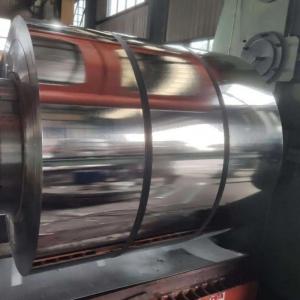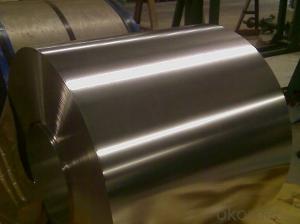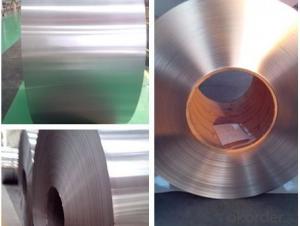Prime electrolytic quality tinplate coil/secondary electrolytic tinplate ETP coil
- Loading Port:
- Tai Chung
- Payment Terms:
- TT or LC
- Min Order Qty:
- 20 m.t.
- Supply Capability:
- 20000 m.t./month
OKorder Service Pledge
OKorder Financial Service
You Might Also Like
1. Structure of ETP Description
Tinplate is sheet steel covered by a layer of tin, widely used in packaging industry and other field.
Tianjin Kunry supply reasonable prices of tinplate with better quality and faster delivery. We hope to conclude business with more customers at home and abroad
2. Main Features of the ETP
Our company has been in the industry for more than 10 years.We have been trusted by domestic owned companies,,as well as international distributors and renowned brands,such as Haier,Kia and Beijing Hyundai etc.We put quality as lifeline.We never manufacture or sale defected products,or lowering our price at the cost of products quality.
3.Prime Electrolytic Tinplate,Tinplate China Images
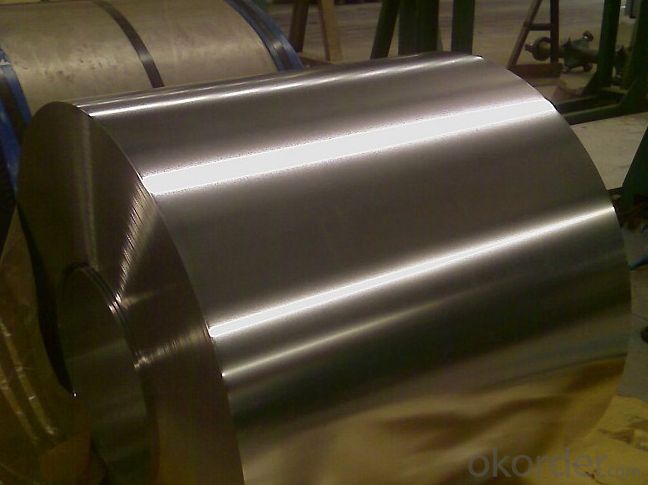
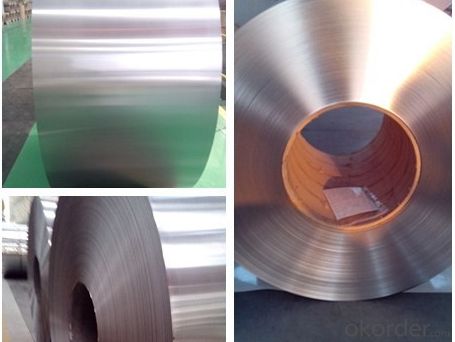
4.Prime Electrolytic Tinplate,Tinplate China Specification
Product name | Prime T3 Tinplate in sheets |
Steel Type | SPCC, MR |
Temper(BA&CA) | T1~T5 |
Coating for the Prime T3 Tinplate in sheets | 1.1~11.2g/m2 |
Thickness and tolerance | 0.15~0.50mm(Tolerance: _+0.01 mm) |
Width & tolerance | 300~1000mm (Tolerance: 0~3mm) |
Cut length & tolerance | 450~``50mm (Tolerance: 0~3mm ) |
Coil inside diameter | 420/508mm |
Coil Weight | Prime T3 Tinplate in sheets weight 3~10 MT |
Passivation | 311 |
Oiling | DOS |
Surface Finish | Bright, Stone, Silver, Matte |
Packaging | Prime T3 Tinplate in sheets with Seaworthy Standard with wooden pallet |
Standards Available | GB/T2520, JIS G3303, ASTM A623M & EN10202 |
- Q:How does tinplate contribute to the durability of construction materials?
- Tinplate contributes to the durability of construction materials by providing a protective coating that helps prevent corrosion and rusting. This coating acts as a barrier against moisture and other environmental factors, extending the lifespan of the construction materials. Additionally, tinplate enhances the strength and structural integrity of the materials, making them more resistant to wear and tear.
- Q:How is tinplate made?
- Tinplate is made by coating thin sheets of steel with a layer of tin through a process called electroplating. The steel sheets are first cleaned and prepared, then immersed in an electrolyte bath containing tin salts. When an electric current is passed through the bath, tin ions are attracted to the steel, forming a thin layer of tin on the surface. This tin coating enhances the steel's resistance to corrosion and provides a shiny and attractive finish.
- Q:Why tinned fruit cans, some snow wall, and some inner wall does not appear?
- The same is canned fruit, tin cans taste more than glass bottles, why is it better? Because the storage process is completely isolated from the sun, so that it can retain the original flavor of canned fruit.
- Q:Can tinplate be used for packaging chemicals?
- Yes, tinplate can be used for packaging chemicals. It is a commonly used material for packaging due to its durability, resistance to corrosion, and ability to protect against light and oxygen. Tinplate is also known for its ability to withstand various temperatures and pressures, making it suitable for storing and transporting a wide range of chemicals safely.
- Q:Can tinplate be used for non-food products?
- Yes, tinplate can be used for non-food products. Tinplate is a versatile material commonly used in various industries such as automotive, electronics, packaging, and construction. It offers excellent corrosion resistance and durability, making it suitable for non-food applications like cans for paints, aerosols, chemicals, and other industrial products.
- Q:How does tinplate compare to plastic in terms of sustainability?
- Tinplate is generally considered more sustainable than plastic due to its recyclability and lower environmental impact throughout its life cycle. Unlike plastic, tinplate is easily and endlessly recyclable without any loss in quality, making it a preferred choice for packaging materials. Additionally, tinplate has a lower carbon footprint, as it requires less energy to produce and emits fewer greenhouse gases during manufacturing. On the other hand, plastic often ends up in landfills or as litter, taking hundreds of years to decompose and contributing to pollution and wildlife harm. Overall, tinplate offers better sustainability attributes and is a more environmentally friendly option compared to plastic.
- Q:How does tinplate perform in terms of insulation properties?
- Tinplate does not perform well in terms of insulation properties as it is a good conductor of heat and electricity.
- Q:What are the different methods of labeling and branding on tinplate packaging?
- Some of the different methods of labeling and branding on tinplate packaging include lithographic printing, embossing, hot stamping, and screen printing.
- Q:Can tinplate be used for energy storage applications?
- No, tinplate is not typically used for energy storage applications. It is more commonly used for packaging purposes due to its ability to protect contents from external elements.
- Q:Is tinplate affected by moisture or humidity?
- Yes, tinplate is susceptible to corrosion when exposed to moisture or high humidity. It is important to protect tinplate from such conditions to prevent rusting and maintain its quality and durability.
1. Manufacturer Overview |
|
|---|---|
| Location | |
| Year Established | |
| Annual Output Value | |
| Main Markets | |
| Company Certifications | |
2. Manufacturer Certificates |
|
|---|---|
| a) Certification Name | |
| Range | |
| Reference | |
| Validity Period | |
3. Manufacturer Capability |
|
|---|---|
| a)Trade Capacity | |
| Nearest Port | |
| Export Percentage | |
| No.of Employees in Trade Department | |
| Language Spoken: | |
| b)Factory Information | |
| Factory Size: | |
| No. of Production Lines | |
| Contract Manufacturing | |
| Product Price Range | |
Send your message to us
Prime electrolytic quality tinplate coil/secondary electrolytic tinplate ETP coil
- Loading Port:
- Tai Chung
- Payment Terms:
- TT or LC
- Min Order Qty:
- 20 m.t.
- Supply Capability:
- 20000 m.t./month
OKorder Service Pledge
OKorder Financial Service
Similar products
New products
Hot products
Related keywords
